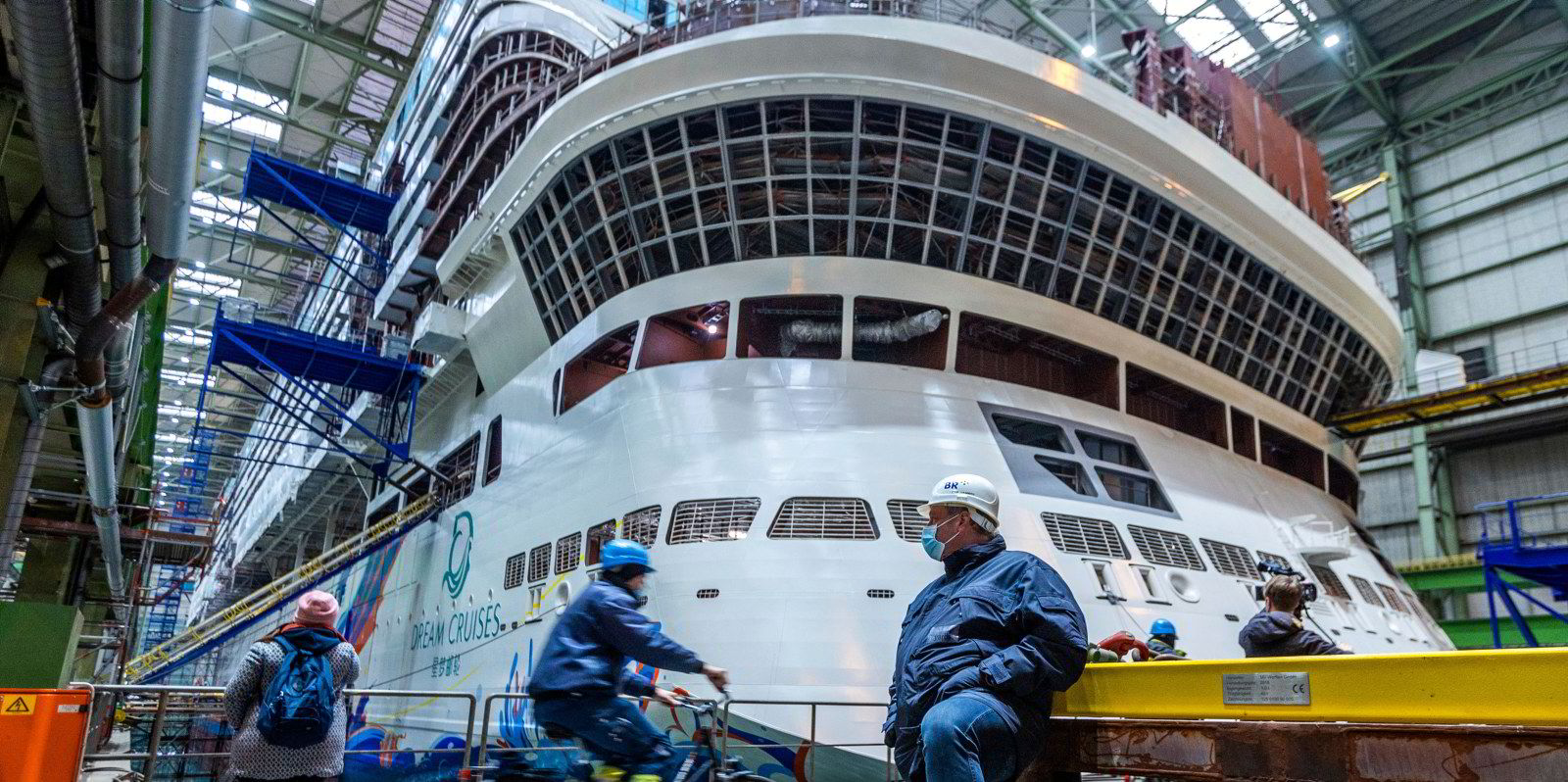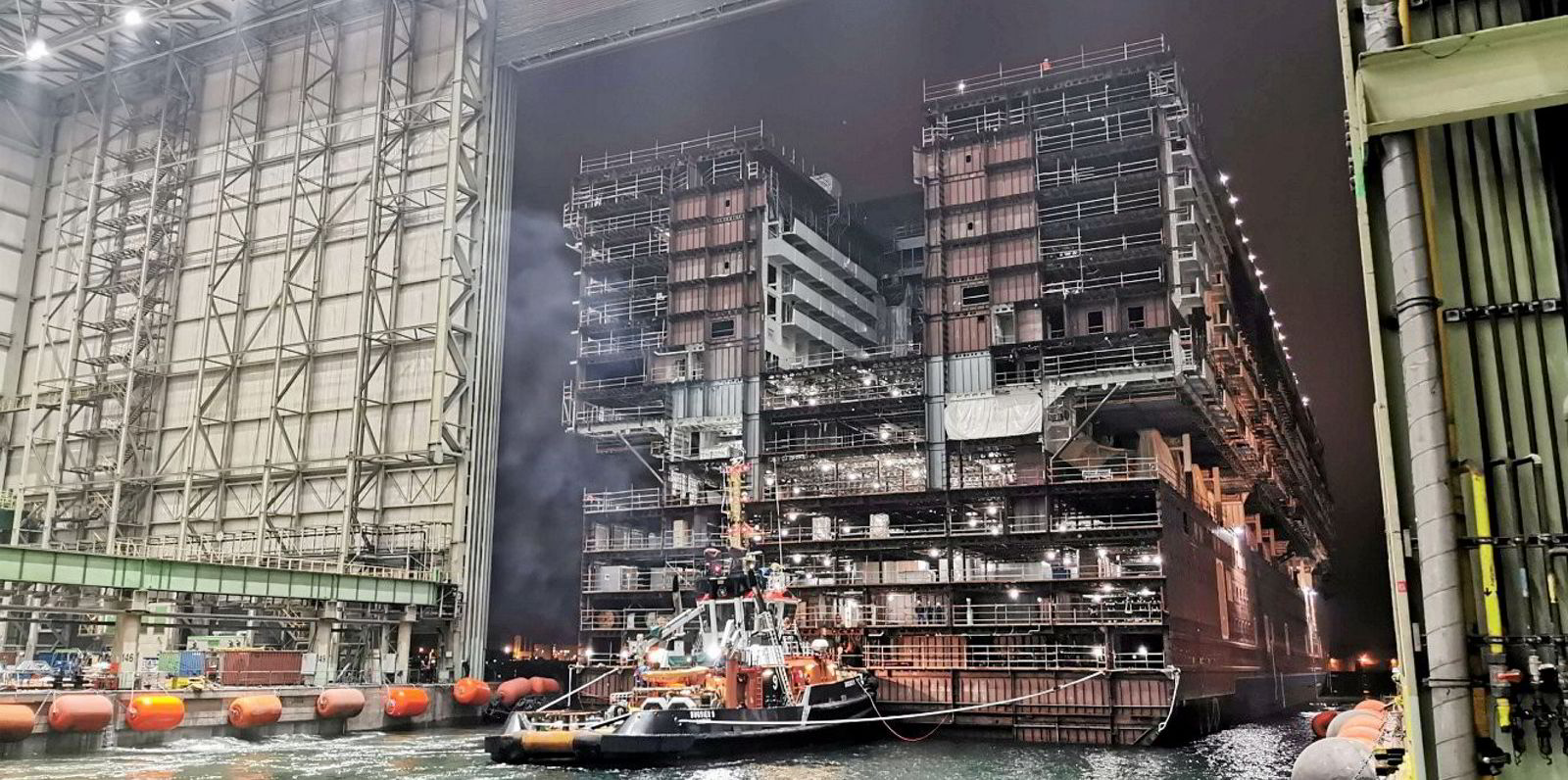The administrator of MV Werften — once Genting Hong Kong’s German shipbuilding arm — estimates that any buyer of the partly completed Global Dream will need to spend €700m ($712m) to complete the mega-size cruise newbuilding.
Christoph Morgen, in an interview with German newspaper Die Welt, said buying and completing the 201,000-gt ship would probably cost a new owner around €1bn ($1.01bn) in total, perhaps less if the German government took over guarantees on loans.
Morgen has a difficult task ahead. He has until the end of 2023 to sell the ship and get it out of the giant covered building dock of the former MV Werften Wismar facility that is now owned by Thyssenkrupp Marine Systems.
But he is trying to sell what would be the largest cruise ship afloat in terms of passenger capacity at a time when most cruise companies neither want nor can afford to add capacity.
He said the Global Dream is structurally complete but still requires the installation of some equipment and passenger facilities.
Roller coaster
Much of that equipment is already on site waiting to be installed, including a water park and custom-designed roller coaster.
About 90% of the 3,300 prefabricated cabins designed to house 9,000 passengers had already been installed before work stopped following Genting’s bankruptcy.
Morgen said €1.3bn has been spent so far on construction of the ship, which was supposed to cost €1.6bn in total.
Of that amount, about €600m was contributed by Genting, while €600m came in the form of loans from 16 banks that were largely guaranteed by the state of Mecklenburg-Western Pomerania.
These loans remain outstanding, and Morgen cautioned that guarantees of up to €275m could be called upon.
The Global Dream has attracted potential suitors. Genting majority shareholder Lim Kok Thay and Sweden’s Stena Line are both reported to have expressed interest over the past six months.
Stena is said to have eyed the ship for a potential Chinese cruise venture, although it lost interest because China has continued to keep its borders shut as it doggedly pursues its zero-Covid strategy.
The Global Dream would have no problems finding a buyer in a strong cruise market. However, most major lines have taken on a large amount of debt to keep afloat over the past 30 months, and they and their lenders have no appetite to add debt of around €1bn.
Tellingly, of the 13 cruise newbuildings that trade publication Cruise Industry News reports as having been ordered since the onset of the pandemic, none are large ships for the big-name mass-market brands.
The largest one ordered is an 84,600-gt residential cruise ship, which Meyer Werft will build for Ocean Residences. Cruise giant MSC also declared options for two 70,000-gt, 922-berth cruise ships for its luxury Explora brand that are set to launch next year.
The rest have been smaller expedition or ultra-deluxe ships.
Cruise industry sources told TradeWinds that the mass-market lines have been struggling to fill their existing ships, including the many newbuildings that were delivered during the pandemic. They have had to resort to intense discounting to get customers on board.
The challenge Morgen faces is that the Asian cruise market, for which the Global Dream was specifically designed, is largely on hold as countries there remain cautious about reopening to wide-scale cruise tourism.
The challenge Morgen faces is that the Asian cruise market, for which the Global Dream was specifically designed, remains largely on hold
However, he noted that it would cost only “a few million euros” to adapt the ship for the European or North American markets.
Faced with the tight deadline to get the Global Dream out of its building dock by the end of 2023, recycling the ship in Turkey is a last resort that Morgen hopes to avoid.
Work has already begun on scrapping the keel blocks of the second Global-class ship that was under construction in Wismar, which is expected to yield 17,000 tonnes of steel. Most of the equipment that was intended to be used in its construction is also being sold off.






